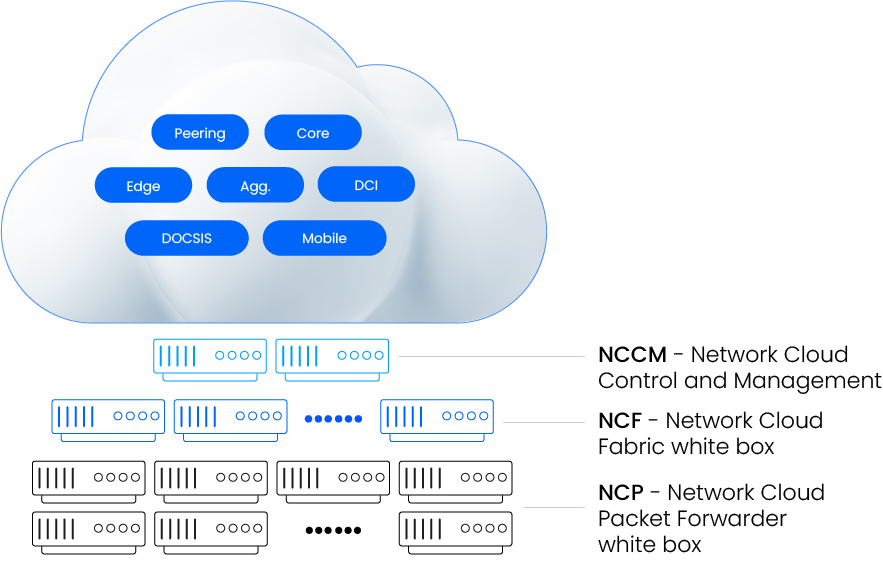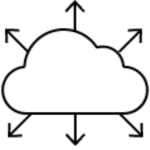Blog
Q&A with KGPCo’s Joe Baeumel, VP of Partner Strategy and Business Development Joe Baeumel, VP of Partner Strategy and Business Development...
Read moreScalable, software-based NOS for all network domains, running on standard white boxes
DriveNets NOS is a cloud-native, distributed networking software, built on containerized
Microservices, creating a unified shared infrastructure over distributed architecture.
DNOS services are hardware (HW) agnostic. DNOS creates an abstraction of any HW resource residing in a cluster of OCP-certified original design manufacturer (ODM) white boxes (WBs) into a virtual resource consumable by the DNOS services. It provides inherent support for high availability and resilience, achieved through containers, microservices and distributed clusters.
Built on a Linux-based OS, containerized microservices and open APIs, DNOS provides a scalable and reliable programmable infrastructure, enabling data and control plane routing functions for any use case, from core to edge.
DNOS offers the benefits of a cloud-like network architecture and an efficient operational model, while maintaining the simplicity of traditional networks.




Blog
Q&A with KGPCo’s Joe Baeumel, VP of Partner Strategy and Business Development Joe Baeumel, VP of Partner Strategy and Business Development...
Read moreBlog
Enes Kanter plays center position for the famous Boston Celtics basketball team. He is a Swiss-born, Turkish immigrant to the...
Read moreBlog
Recently, I delivered a presentation at Networking Field Day 22, covering the DriveNets Network Operating System (DNOS), which, from the...
Read more